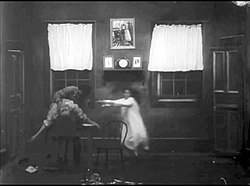
The Birth of a Nation, originally called The Clansman, is a 1915 American silent epic drama film directed by D. W. Griffith and starring Lillian Gish. The screenplay is adapted from Thomas Dixon Jr.'s 1905 novel and play The Clansman. Griffith co-wrote the screenplay with Frank E. Woods and produced the film with Harry Aitken.

The Ku Klux Klan, commonly shortened to the KKK or the Klan, is the name of several historical and current American white supremacist, far-right terrorist organizations and hate groups. The Klan was "the first organized terror movement in American history." Their primary targets at various times have been African Americans, as well as Jews and Catholics.
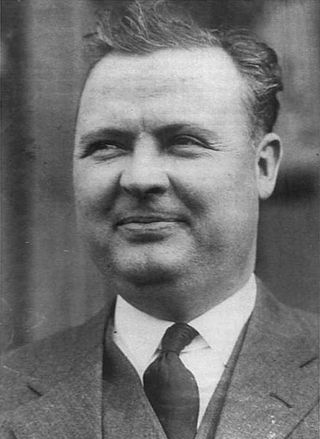
David Curtis "Steve" Stephenson was an American Ku Klux Klan leader, convicted rapist and murderer. In 1923 he was appointed Grand Dragon of the Indiana Klan and head of Klan recruiting for seven other states. Later that year, he led those groups to independence from the national KKK organization. Amassing wealth and political power in Indiana politics, he was one of the most prominent national Klan leaders. He had close relationships with numerous Indiana politicians, especially Governor Edward L. Jackson.
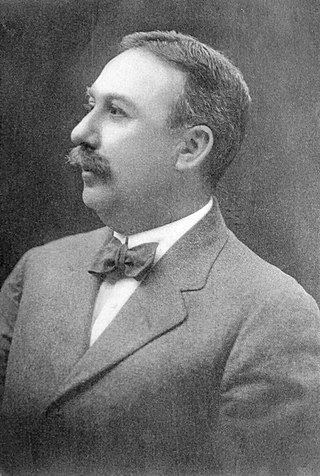
Edwin Stanton Porter was an American film pioneer, most famous as a producer, director, studio manager and cinematographer with the Edison Manufacturing Company and the Famous Players Film Company. Of over 250 films created by Porter, his most important include What Happened on Twenty-third Street, New York City (1901), Jack and the Beanstalk (1902), Life of an American Fireman (1903), The Great Train Robbery (1903), The European Rest Cure (1904), The Kleptomaniac (1905), Life of a Cowboy (1906), Rescued from an Eagle's Nest (1908), and The Prisoner of Zenda (1913).

The Leopard's Spots: A Romance of the White Man's Burden—1865–1900 is the first novel of Thomas Dixon's Reconstruction trilogy, and was followed by The Clansman: A Historical Romance of the Ku Klux Klan (1905), and The Traitor: A Story of the Fall of the Invisible Empire (1907). In the novel, published in 1902, Dixon offers an account of Reconstruction in which he portrays a Reconstruction leader, Northern carpetbaggers, and emancipated slaves as the villains; Ku Klux Klan members are anti-heroes. While the playbills and program for The Birth of a Nation claimed The Leopard's Spots as a source in addition to The Clansman, recent scholars do not accept this.
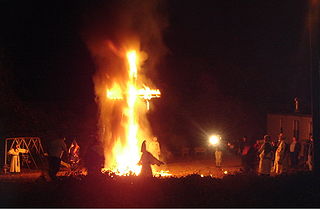
In modern times, cross burning or cross lighting is a practice which is associated with the Ku Klux Klan. However, it was practiced long before the Klan's inception. Since the early 20th century, the Klan burned crosses on hillsides as a way to intimidate and threaten black Americans and other marginalized groups.

William Joseph Simmons was an American preacher and fraternal organizer who founded and led the second Ku Klux Klan from Thanksgiving evening 1915 until being ousted in 1922 by Hiram Wesley Evans.
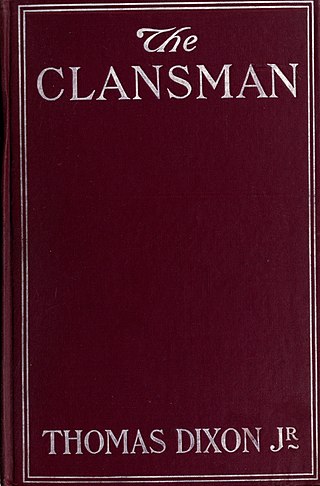
The Clansman: A Historical Romance of the Ku Klux Klan is a novel published in 1905, the second work in the Ku Klux Klan trilogy by Thomas Dixon Jr.. Chronicling the American Civil War and Reconstruction era from a pro-Confederate perspective, it presents the Ku Klux Klan heroically. The novel was adapted first by the author as a highly successful play entitled The Clansman (1905), and a decade later by D. W. Griffith in the 1915 movie The Birth of a Nation.
The Pulaski riot was a race riot that occurred in Pulaski, Tennessee, on January 7, 1868. While the riot appeared to be based in a trade dispute of the previous summer between Calvin Lamberth, a white man, and Calvin Carter, an African American, it was provoked when Lamberth shot a friend of Carter's over rumored comments about the former's black mistress.
The United Klans of America Inc. (UKA), based in Alabama, is a Ku Klux Klan organization active in the United States. Led by Robert Shelton, the UKA peaked in membership in the late 1960s and 1970s, and it was the most violent Klan organization of its time. Its headquarters was the Anglo-Saxon Club outside Tuscaloosa, Alabama.

The Indiana Klan was a branch of the Ku Klux Klan, a secret society in the United States that organized in 1915 to promote ideas of racial superiority and affect public affairs on issues of Prohibition, education, political corruption, and morality. It was strongly white supremacist against African Americans, Chinese Americans, and also Catholics and Jews, whose faiths were commonly associated with Irish, Italian, Balkan, and Slavic immigrants and their descendants. In Indiana, the Klan did not tend to practice overt violence but used intimidation in certain cases, whereas nationally the organization practiced illegal acts against minority ethnic and religious groups.
Ku Klux Klan activities in Inglewood, California, were highlighted by the 1922 arrest and trial of 36 men, most of them masked, for a night-time raid on a suspected bootlegger and his family. The raid led to the shooting death of one of the culprits, an Inglewood police officer. A jury returned a "not guilty" verdict for all defendants who completed the trial. It was this scandal, according to the Los Angeles Times, that eventually led to the outlawing of the Klan in California. The Klan had a chapter in Inglewood as late as October 1931.
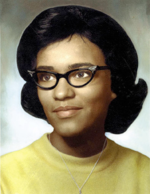
Carol Jenkins was an African-American woman who was murdered on September 16, 1968, by two white men in a sundown town in Indiana. Her murder remained unsolved for over thirty years until a tip led investigators to one of her alleged killers in the early 2000s. Her alleged killer, Kenneth Clay Richmond, who was affiliated with the Ku Klux Klan, was declared incompetent to stand trial and died of bladder cancer in 2002. His accomplice was never identified

The Ku Klux Klan is an organization that expanded operations into Canada, based on the second Ku Klux Klan established in the United States in 1915. It operated as a fraternity, with chapters established in parts of Canada throughout the 1920s and early 1930s. The first registered provincial chapter was registered in Toronto in 1925 by two Americans and a Canadian. The organization was most successful in Saskatchewan, where it briefly influenced political activity and whose membership included a member of Parliament, Walter Davy Cowan.
Gary Thomas Rowe Jr., known in Witness Protection as Thomas Neil Moore, was a paid informant and agent provocateur for the FBI. As an informant, he infiltrated the Ku Klux Klan, as part of the FBI's COINTELPRO project, to monitor and disrupt the Klan's activities. Rowe participated in violent Klan activity against African Americans and civil rights groups.

The Black Hand is an American silent film directed by Wallace McCutcheon. It is generally considered by motion-picture historians to be the earliest surviving gangster film.

The Child Stealers also known as The Kidnapped Child or Child Stealing is a 1904 British silent crime film about kidnapping, directed by William Barker and produced by the Warwick Trading Company.

The Kleptomaniac, is a 1905 American silent drama film, directed by Edwin S. Porter partly filmed on location in New-York denouncing the discriminatory treatment of the poor by the justice system. It is one of the first American social drama and Courtroom drama.

The Train Wreckers is a 1905 American silent drama film, directed by Edwin S. Porter showing how the daughter of a railway switchman and lover of a locomotive engineer is defeating outlaws trying to derail a train.

The Ku Klux Klan in Southern Illinois operated between 1867 and 1875 in seven counties—Franklin, Williamson, Jackson, Saline, Johnson, Union, and Pope. The "worst Klan years" were in 1874 and 1875.

